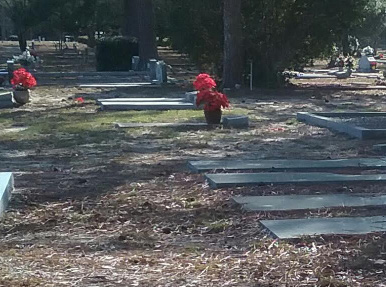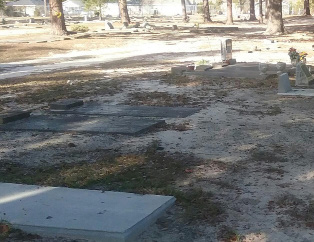
Court action best for race issues in Camilla
The Black side (left) of Oakview Cemetery appears dormant compared to where Whites (Right) are buried.
Photo by St. Clair Murraine
By St. Clair Murraine
Outlook staff writer
Calling on civil rights attorney Benjamin Crump to lead a potential court fight over apparent segregation practices in Camilla is the only move that could lead to changes in social inequities that have plagued Blacks in the South Georgia city for decades, said a prominent historian.
In addition, renowned historian Larry Rivers also said that only the court could make the changes to befit the majority who are disenfranchised. Rivers, former president of Fort Valley University and a history professor at FAMU, shared his view on race relations in Camilla a week after Crump sent a letter to the city council outlining a list of demand for documents.
Rivers said what’s going on in Camilla raises the same concerns as famous cases such as Brown vs. The Board of Education in 1954, Plessy vs. Ferguson in 1896 and the Dread Scott Decision in 1857.
“It cannot be decided in the court of public opinion because you cannot legislate people’s attitude but you can legislate people’s behavior,” Rivers said. “If you want a behavior to change, you have to make an appropriate law by which people respect the way of doing things in a fair way. There is no other way this can be decided but through the courts.”
Among Crump’s concerns is why a city charter gives city manager Bennett Adams more power on government matters than mayor Rufus Davis. Specifically, Crump wants to know why Davis, who was elected two years ago, hasn’t been given a key to city hall.
Crump also called for the removal of a fence that separates Black burial spaces from those of Whites.
Such a practice goes back to reconstruction when freed Blacks had graveyards round their church yards, Rivers said. However, Blacks who weren’t church members were buried in public areas, he said. White churches did the same thing for Whites only, he said.
The practice of separate burial spots in a cemetery is still being practiced in several small Southern towns, he said.
“The only time you hear about these incidents is when an African-American may want to be interned at one of the better cemeteries in a Southern town, which happens in many instances to be controlled by Whites,” Rivers said. “This is no surprise that this is happening in Camilla.
“It’s a drawback to the institution of slavery and the creation of separate but equal.”
Another way of bringing about change is for Blacks in Camilla to galvanize behind leaders who could push for change, although he admitted doing that might be more difficult than it was decades ago.
“In today’s society, you’ve got a lot of people who are thinking about the bottom line; how is this going to affect me financially and how this is going to affect my family,” Rivers said. “That’s just the mentality of people.”
Rivers went on to say that the most effective way to bring about change is through the ballot box, whether to do away with inequities or fight gerrymandering.
“Too many people have died for Blacks to vote,” he said. “Camilla consists primarily of African-Americans and African-Americans can do just about anything they want to improve that by simply going out and voting for people who will not only represent African-Americans but will represent all of the citizens of Camilla.
“In a way, African Americans have a lot of that in their own hands. If they vote they can change a lot in that town.”










